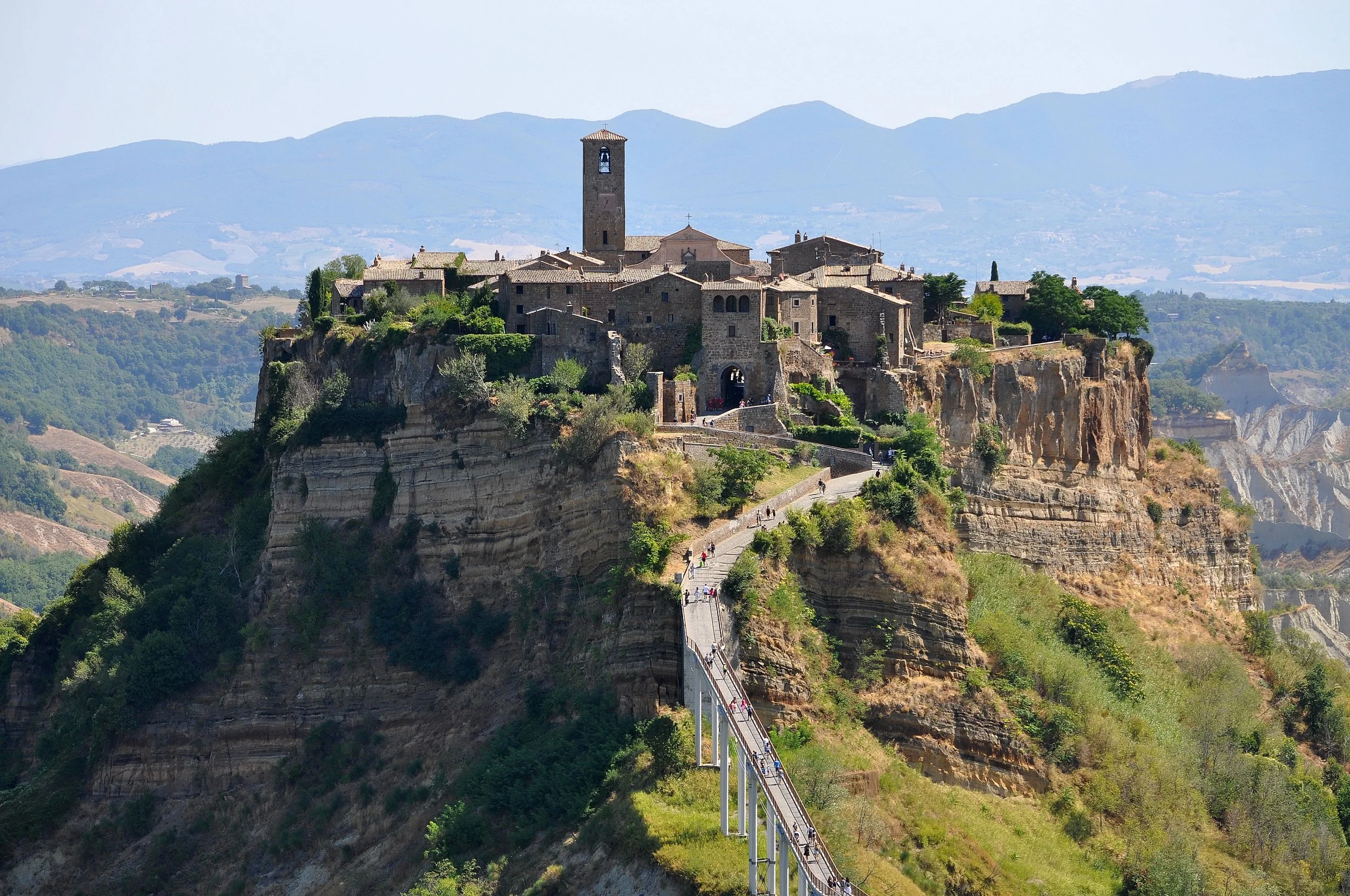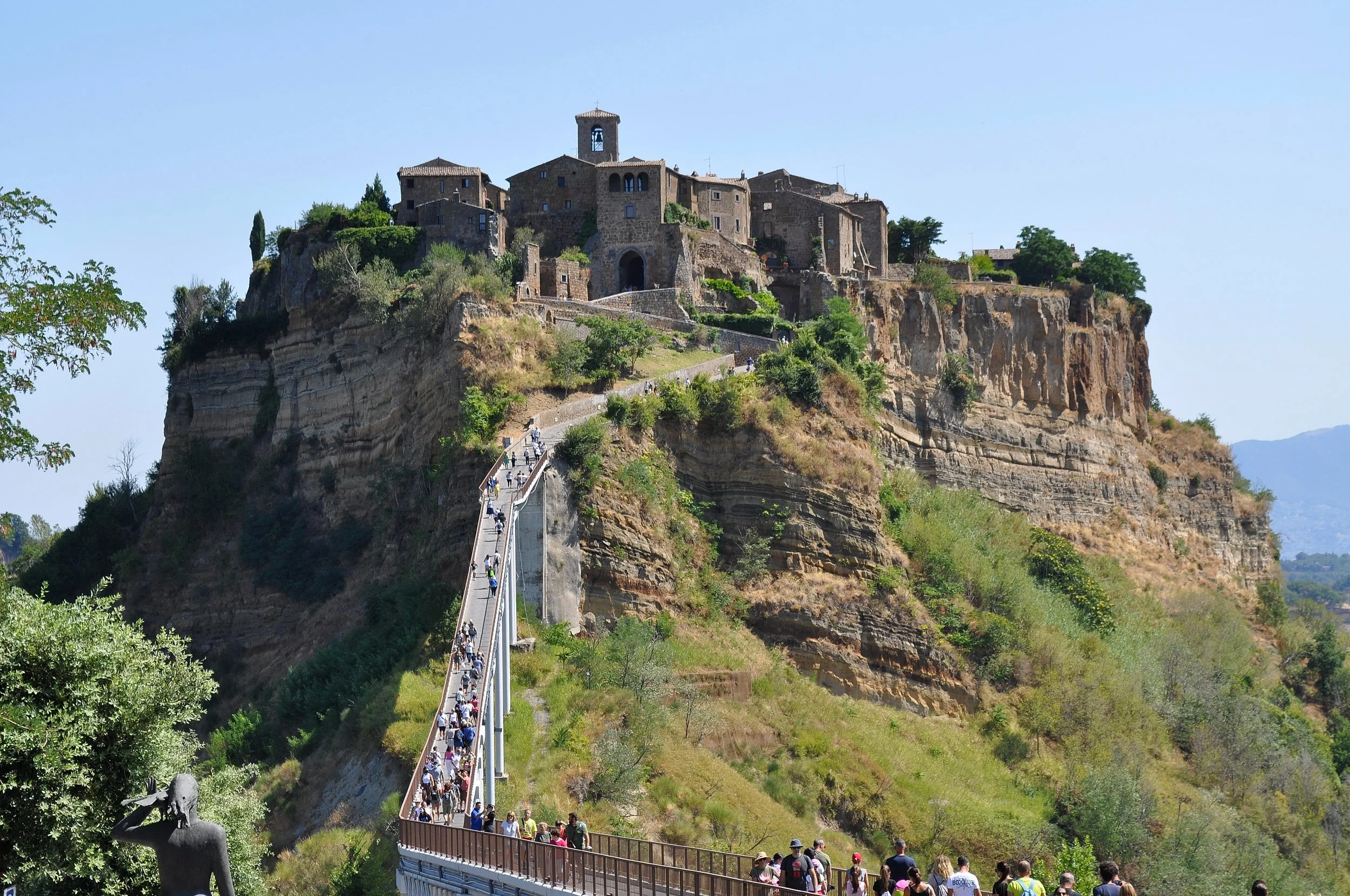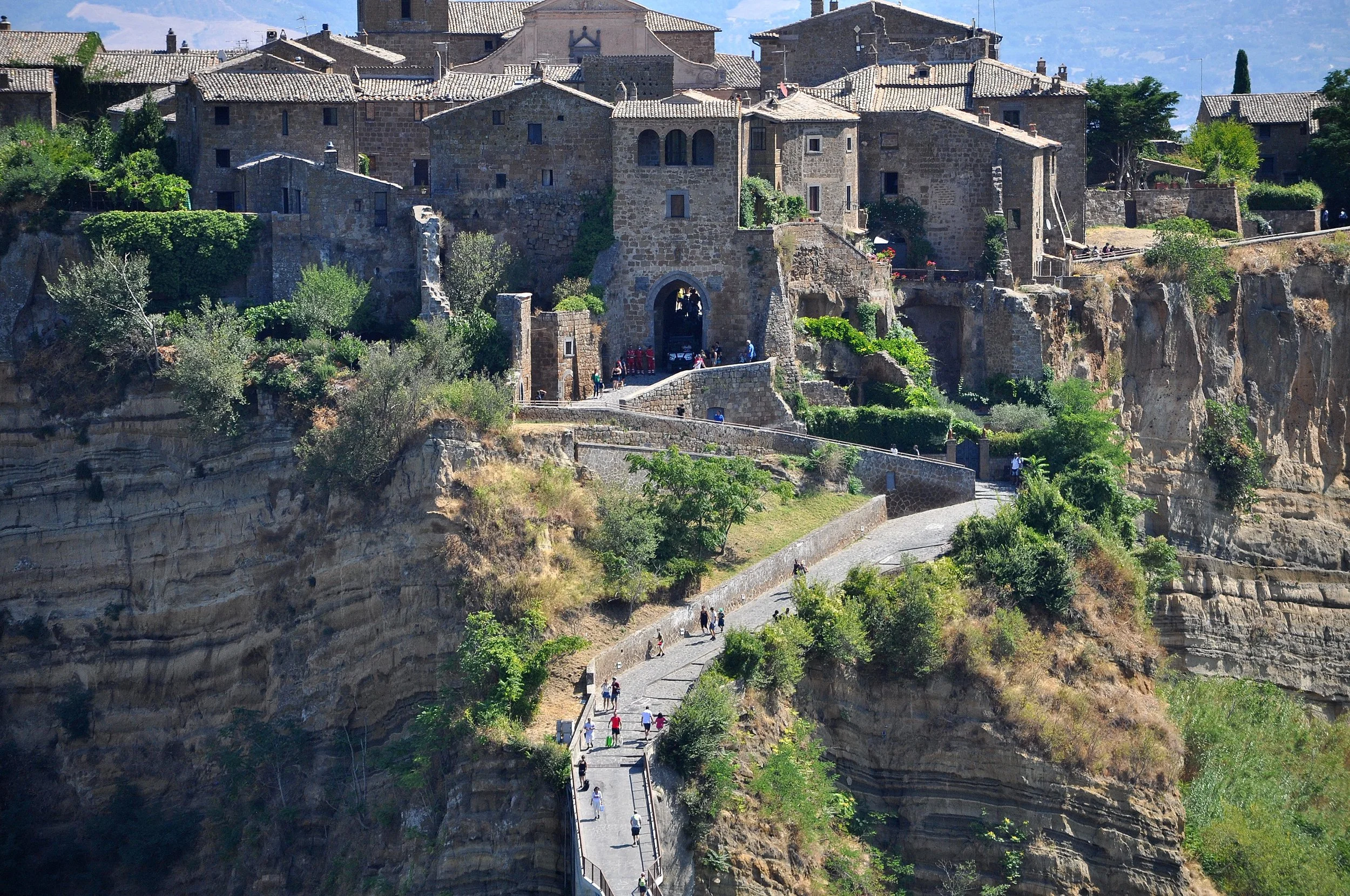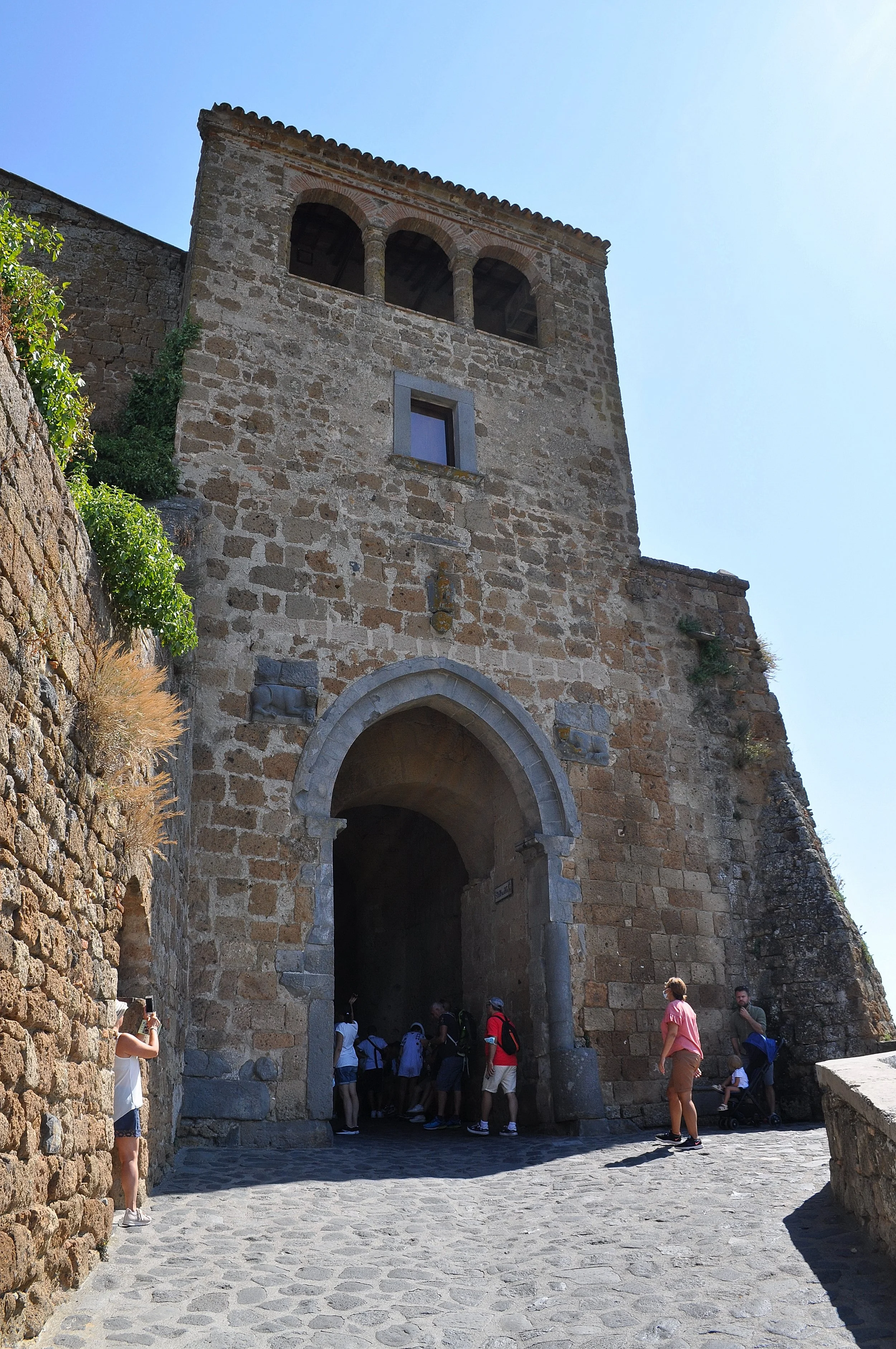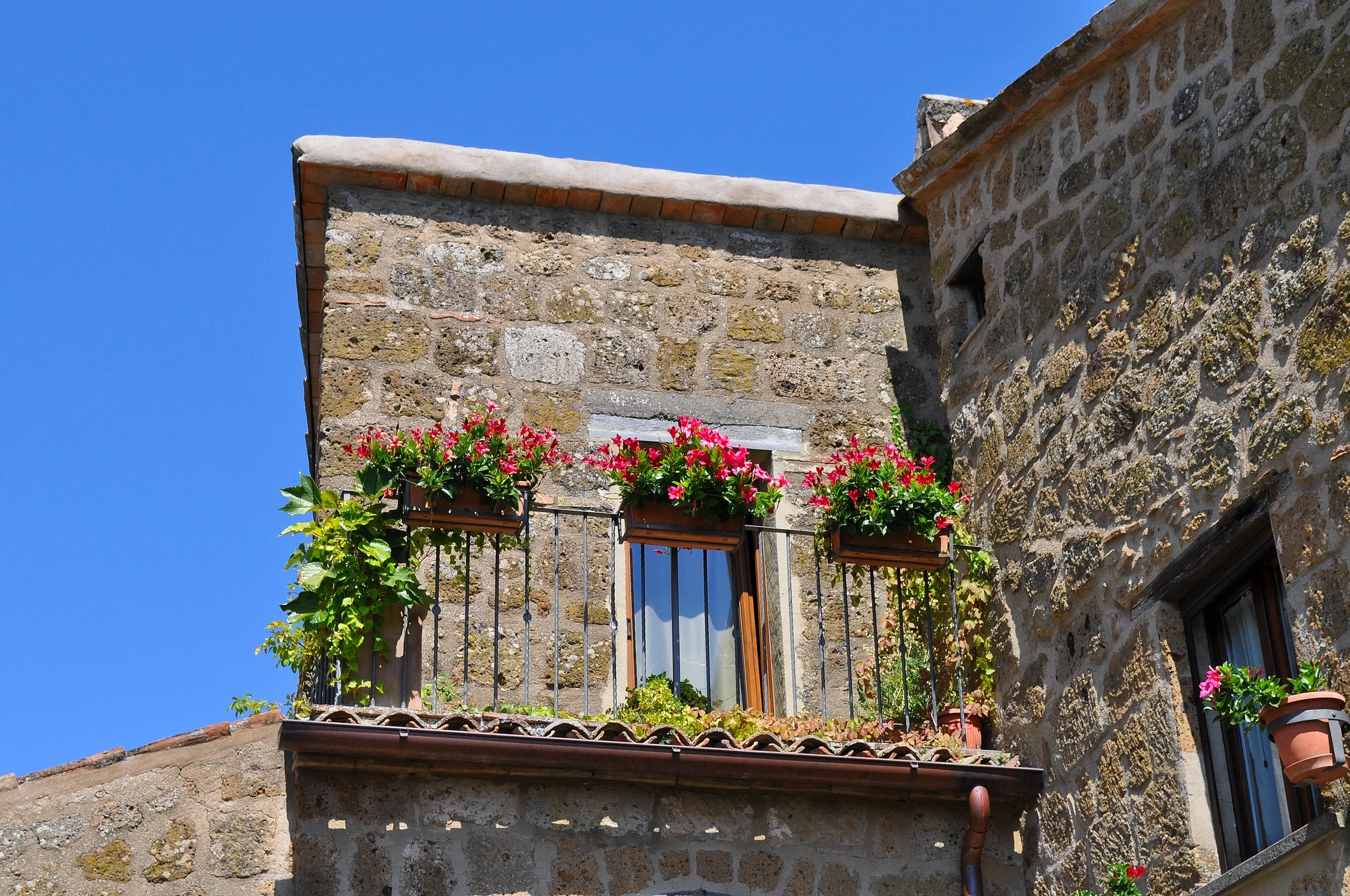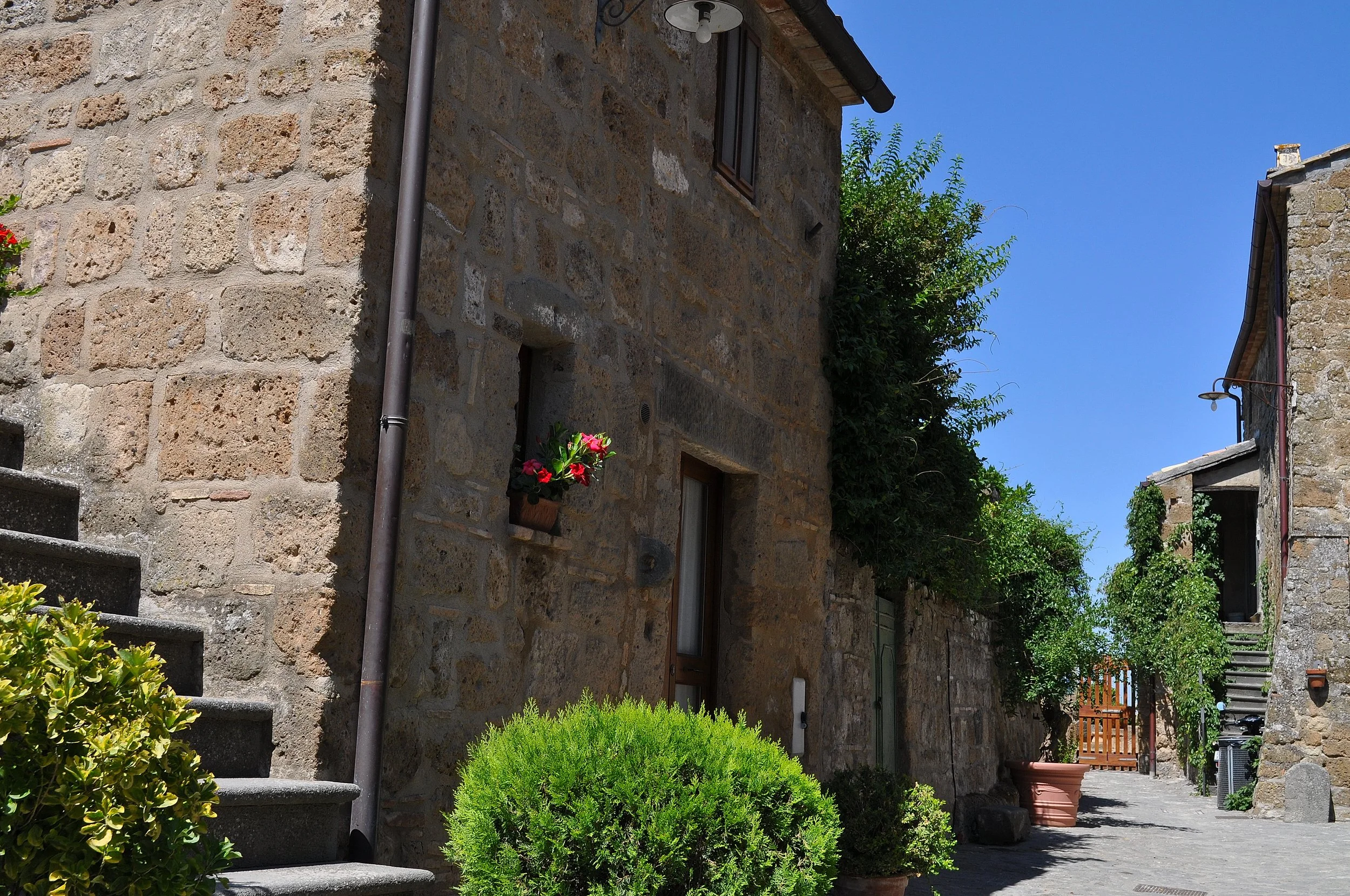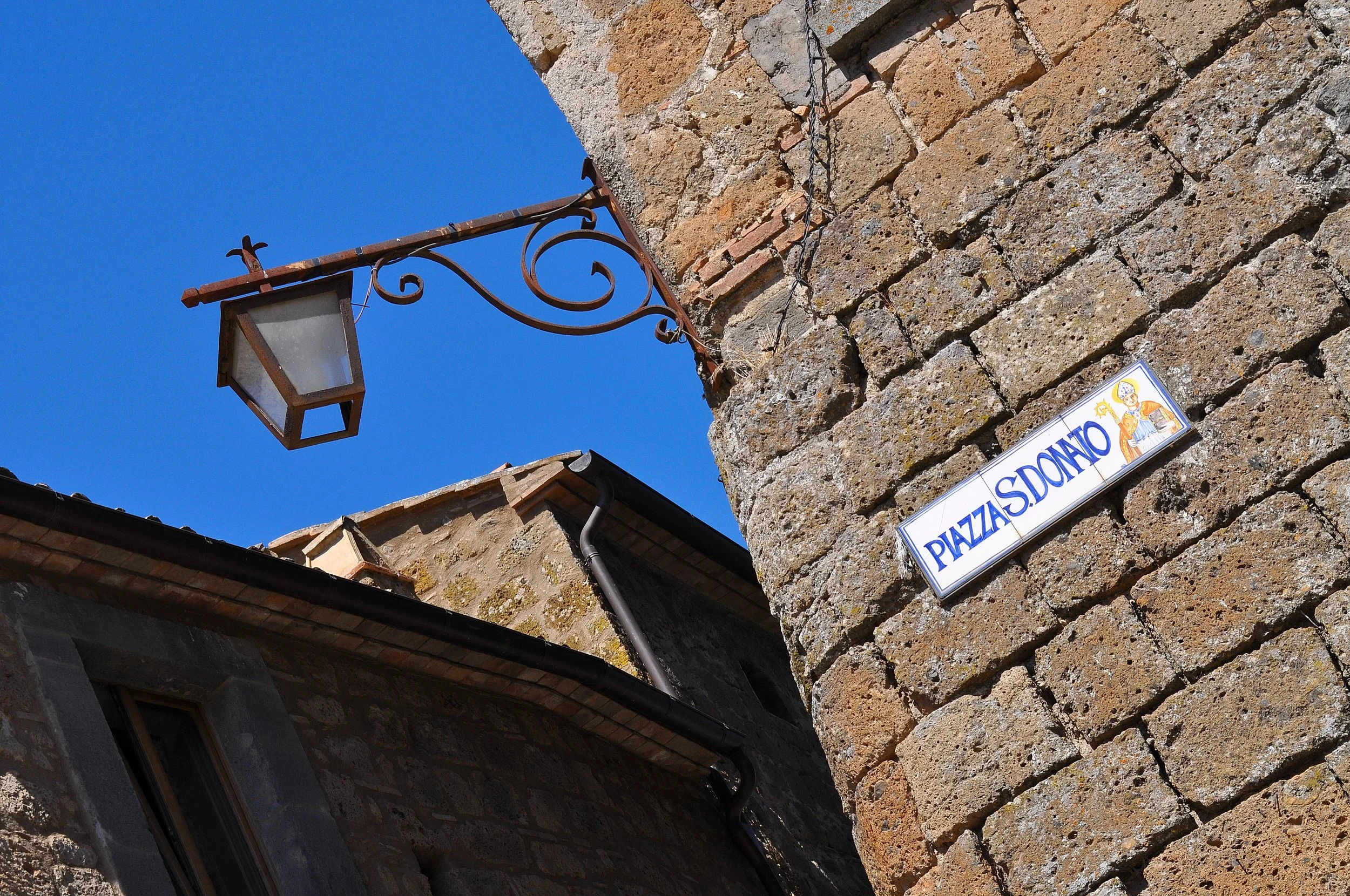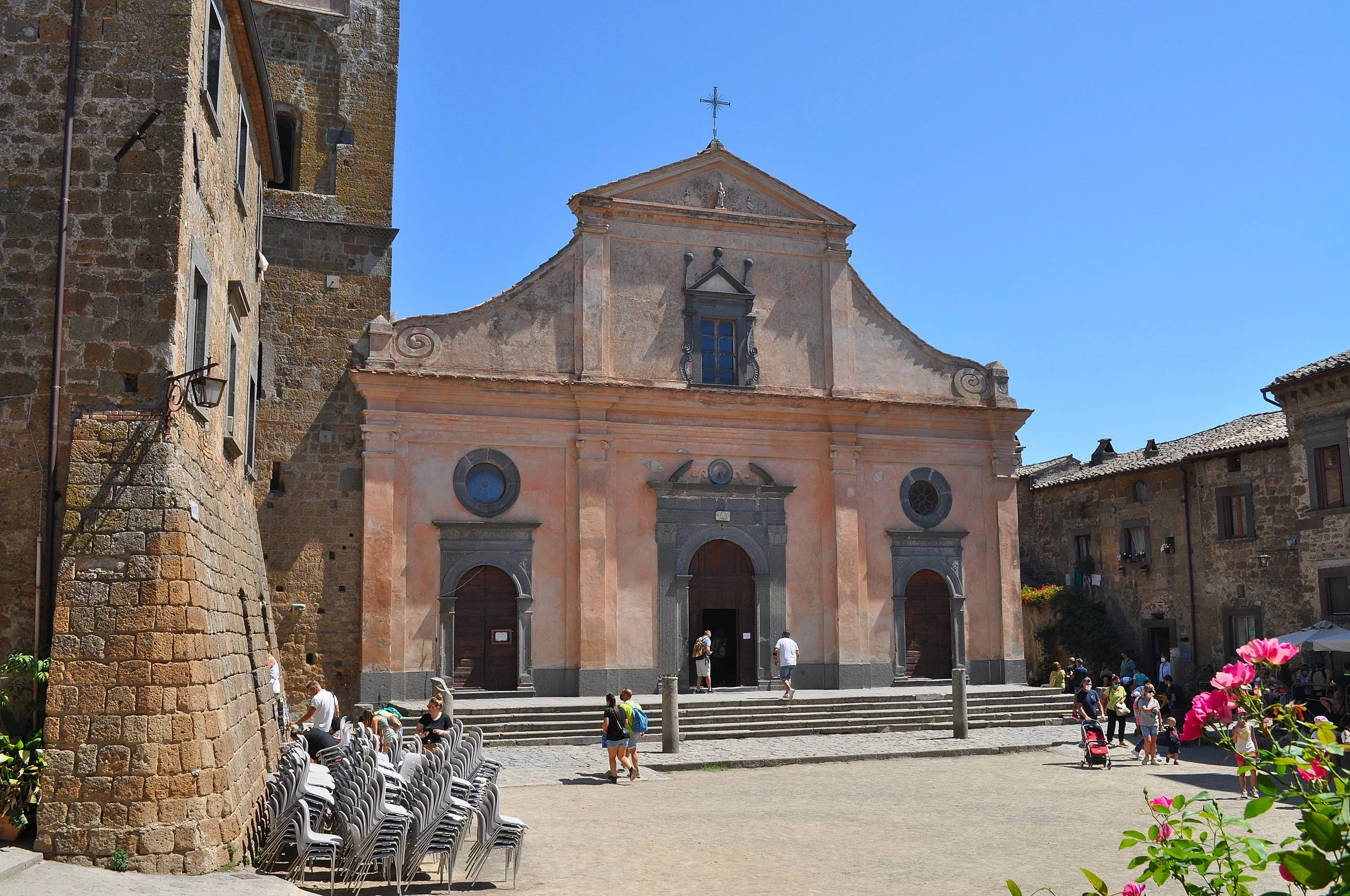Civita di Bagnoregio
A magical and timeless place. Wandering aimlessly through this village allows you to discover wonderful corners to keep in memory and, above all, to photograph. It is known as “the dying city” due to erosion, which in the past threatened to slowly make the town disappear. Let yourself be guided on this fantastic walk!
Angela: we’re getting the van ready this time for a truly special destination.
Piero: we’re heading to an enchanting place, where time seems to have stood still.
Angela: we’re driving toward Bagnoregio, in the province of Viterbo, to visit its Civita, one of the most sought-after tourist destinations, both nationally and internationally.
Piero: we’re in the heart of Tuscia, halfway between Orvieto and Lake Bolsena, to explore this wonderful village that defies the passing of time and the erosion of the tuff rock on which it stands.
Angela: surrounding this marvel is the Valley of the Calanchi, another natural wonder sculpted by the wind and the rain.
Piero: the village we’re about to visit is known as “the dying city”, precisely because of erosion, which once threatened to make it disappear slowly: imagine that the tuff cliffs thin out by a few centimeters each year. Today, fortunately, major restoration and support works have given it a present and a future, sustained mainly by tourism, since only about a dozen residents live here permanently.
Here we are in Bagnoregio
Angela: you can reach it by taking the A1 motorway exit at Orte, if you’re coming from the south, or at Orvieto if you’re coming from the north. In both cases, it takes about half an hour by car to get to Bagnoregio.
Piero: we park — in a paid area, not without some difficulty — and begin our visit. Civita lies just outside the town: you can reach it on foot in about twenty minutes, or take one of the paid shuttles that depart from Piazzale Battaglini.
Angela: the walk is definitely pleasant, although the summer heat can make it quite tiring, especially if you’re with children or teenagers. Unfortunately, there are no real alternatives: even if you take the shuttle, you only skip a small part of the walk — and it’s actually the least exposed to the heat.
Piero: access to Civita di Bagnoregio is only possible by purchasing a daily ticket: you can buy it online, at the info point in Piazzale Battaglini, or just before the bridge entrance to Civita.
Angela: another curious fact is that Civita di Bagnoregio has only one access road, represented by a bridge built in 1965, 300 meters long, and now dedicated to the great Alberto Sordiy
The History of Civita di Bagnoregio
Piero: this wonderful village has its roots in Etruscan times and dates back about 2,500 years. Most likely, on the site of today’s Civita stood the acropolis, with its temples and forum. The urban layout follows the typical Etruscan and later Roman plan, made up of decumani and cardines. It occupied an isolated and easily defensible position, but above all a strategic one for trade, thanks to its proximity to the major communication routes of the time. Thus, in the Etruscan era, Civita was a flourishing and wealthy city.
Angela: the Etruscans themselves, however, were already aware of the instability of this area and tried to build works of protection against floods and earthquakes, reinforcing the riverbanks and constructing drainage channels for rainwater. The Romans later continued these works, but after them, they were neglected, and the land quickly deteriorated, leading over time to its abandonment during the Middle Ages, when the village took on its present appearance.
Piero: the story then passes through the Barbarian invasions, Charlemagne, and finally the Papal State. The year 1695 marks the completion of Civita’s decline, following a violent earthquake that destroyed much of the town and caused the collapse of the only road connecting it to what is now Bagnoregio.
Angela: Civita di Bagnoregio is also the birthplace of Saint Bonaventure, a Doctor of the Church, a central figure of the Middle Ages, and the author of the biography of Saint Francis of Assisi.
Piero: according to tradition, Saint Francis used to pray in a cave during his visits to Bagnoregio, and it was right here that he miraculously healed a gravely ill child named Giovanni Fidenza. Once healed, the saint wished the boy good fortune, saying in Latin “bona ventura”. When the boy grew up, grateful to the saint, he decided to join the Franciscan Order and take the name Bonaventure.
The Visit to Civita di Bagnoregio
Angela: our visit begins at the Belvedere: the view from here is truly breathtaking, offering a privileged vantage point over Civita di Bagnoregio and the entire Valley of the Calanchi. This is definitely the spot where you can take the best photographs.
Piero: from here, the sense that time has stopped in Civita is immediately perceptible. The concrete bridge leads to a fairy-tale village, truly suspended in space and time, balancing between stability and precariousness, between myth and history, as if the wonderful power of its beauty mysteriously supports it.
Angela: fext to the Belvedere is the Cave of Saint Bonaventure, which was originally an Etruscan chamber tomb.
Piero: now we face a few dozen steps to descend toward the Mercatello, the area from which the bridge originates.
Angela: the walk along the bridge further builds anticipation to visit this marvel, and you begin to appreciate more closely the extraordinary work of nature carved into this tuff cliff and throughout the entire Valley of the Calanchi.
Piero: access to Civita is exclusively through the Porta Santa Maria: today, this remains the only entrance to the village, but in the past there were five access gates, which over the centuries have become unusable due to progressive landslides and erosion.
Angela: passing beneath it, you can admire the splendid decorations of two lions holding two human heads in their claws, symbolizing the inhabitants of Bagnoregio crushing their tyrants.
Piero: once inside the village, the most beautiful thing to do is to wander through the streets and alleys, fully enjoying the magical atmosphere of this place, perhaps accompanied by the many cats that populate the town — another local attraction much photographed.
Angela: the walk through this village seemingly outside time and the world is truly pleasant. Over time, cafés, bars, restaurants, and local craft shops have sprung up, now bustling with numerous tourists.
Piero: the center of the village is Piazza San Donato, which was once the forum and today houses the Cathedral of San Donato. The church, in Romanesque style, preserves interesting works of art, starting with the 15th-century wooden crucifix from the school of Donatello and a fresco from the school of Perugino.
Angela: two curiosities related to this crucifix: on one hand, it is the protagonist of the heartfelt Good Friday procession, during which it is placed on a coffin; on the other hand, according to an ancient legend, during the plague that struck the area around Bagnoregio in 1499, a woman prayed every day before the crucifix, and one day she heard a voice that reassured her, telling her that her prayers would be answered. The pestilence would end within a few days — and indeed it did, on the exact day the woman passed away.
Piero: another attraction is certainly the Renaissance palaces of the Colesanti, Bocca, and Alemanni families, surrounded by the typical low houses with balconies and external staircases characteristic of medieval architecture, all wonderfully adorned with flowers and plants.
Angela: inside the Alemanni Palace is the Geological and Landslide Museum, which tells the story of the relationship between Civita di Bagnoregio and its territory: an interesting journey through geology, seismology, and archaeology.
Piero: it is definitely worth visiting the eastern cliff to admire the so-called “small bridges”, the clay walls, an imposing trace of the erosion process that began alongside the history of this village.
Angela: wandering aimlessly through this village allows you to discover wonderful corners to keep in memory and, above all, to photograph. Every corner tells the story of this village.
Piero: it is truly a magical and timeless place. One of those spots that is definitely worth visiting. Rediscover the beauty of the things we’ve shared in this short video.

